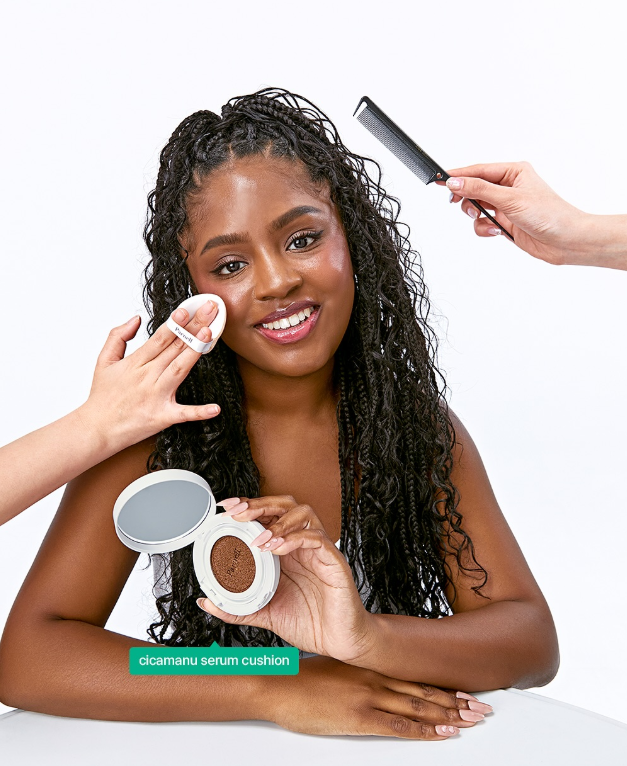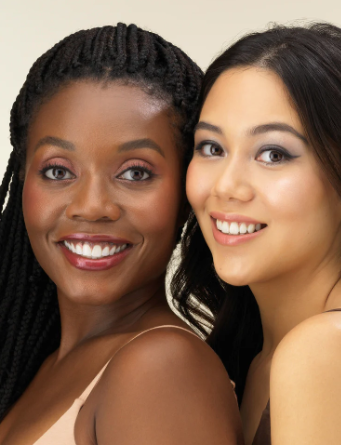
What is Clean Beauty?
Author: MMM Team
07 Oct 2021
You have no doubt seen brands advertising themselves as “clean” but what does it mean? Is it just a marketing buzzword? What products can be considered clean? Unfortunately, there is no regulated definition of “clean beauty” but that doesn’t mean we shouldn’t be informed about how brands can manipulate certain terms and how regulations work to keep them in check. We will be exploring some of the common clean beauty associated buzzwords, what they mean and what to be aware of so you can match your foundation to your ethics and health concerns.
The ‘Free-Of’:
According to the Federal Trade Commission (FTC) who developed the Guides for Use of Environmental Marketing Campaigns, if a brand claims the item is “free-of” ingredients, then it can not in its place have an ingredient with similar impacts to the environment. This prevents dodgy brands from replacing a famously dangerous ingredient with a similar, but lesser known, harmful ingredient.
The FTC notes that some companies can claim to be “free-of” certain ingredients even if there are “trace amounts” of the ingredient found. While the definition of “trace amounts” can be vague, consumers can reasonably assume that it would not be enough to provide negative health or environmental impacts.
The ‘Non-Toxic’:
According to the FTC, anything claiming to be non-toxic must be non-toxic to both humans and the environment. If the product is simply non-toxic to humans, then it should not advertise itself as non-toxic. Due to the ramifications of toxic ingredients, it does seem (pardon the pun) natural that this is one of the most strictly regulated buzzwords associated with clean beauty.
While non-toxic is used as a popular clean beauty buzzword, most reputable and well known brands will have ingredients that are non-toxic for humans at the very least. Illegal dupes and copies found on cheap websites will likely NOT have the same composition as the brands they are copying, and are often found to have toxic ingredients so we do NOT recommend buying cheap imitations.
The ‘All Natural’:
Traditionally, there has been no regulation determining the use of the word ‘natural’ in advertising cosmetic products, though attempts are being made to change this. A 2019 bill introduced in the US congress aims to mark a clear difference between the terms ‘natural’ and ‘naturally-derived,’ and requiring the term ‘natural’ only be used when the composition is at least 70% natural substances (not including water or salt). The fact that they request water not to be included is very important – water makes up a huge amount of most foundations so by excluding it from the required 70%, the manufacturers must ensure that most of their other ingredients are also natural. This bill will require mandatory testing by suppliers, with the results being provided to manufacturers.
For now, ‘natural’ can mean almost anything (after all, most chemicals found on the periodic table are found in nature – a loophole that can be exploited). However reputable brands, like our friends Omiana, explain clearly how they define ‘natural.’
The ‘Organic’:
At its most simple, organic is defined as ‘coming from living plants and animals’ and/or ‘not using artificial chemicals in the growing of plants or animals.’ So what does that mean for beauty? Much like ‘natural’ it legally means nothing.
There are organisations which provide a ‘certified organic’ label which requires ‘most of its ingredients to be … produced and processed without synthetic chemicals’ though they have traditionally applied to food products.
For now, there are no legal requirements in the beauty industry for the use of the word ‘organic,’ so it is important for consumers to research the ‘certified organic’ sticker, who provided it and what their standards are for certification.
Ingredients:
While not necessarily a buzzword, we thought we should highlight a few important things to consider regarding ingredients.
If the ingredients of a product are not transparently available, do not consider the item “clean” or even “non-toxic.” In Australia, mandatory safety standards set forth by the government require ingredient lists to be readily available for consumers at the point of sale and on the product itself.
There are certain terms used in ingredients lists that truly don’t mean anything on their own – like the word fragrance. There are so many possible ingredients that add a scent to a product and without further regulation, brands can keep listing “fragrance” as an ingredient without telling us exactly what ingredient is used. However, most “natural” and “clean” beauty brands do not add any extra fragrance, so for clean beauty shoppers this may not be as common an ingredient concern.
Usually, ingredients are listed in descending order of the volume of that ingredient – that means whatever is listed first on the ingredient list makes up the biggest part of the product. Once the ingredient list has descended to products that make up less than 1%, they can be listed in any order (just because something is listed last doesn’t mean it is only a trace amount!)
Clean beauty is the future for makeup, and we don’t want it to just be a sales buzzword so we sincerely hope this article hasn’t scared you! It is our wish that the industry can begin to truly regulate the definition of clean beauty and the words that are commonly associated with it. In the meantime, we hope that this piece has provided some insight and education regarding the ways in which brands can use these words. Education is key and we hope we have helped you to narrow down your search while you look for your best foundation match!
Subscribe
For all the latest news, tips, trends and exclusives, be sure to sign up to receive the latest straight to your inbox.
By clicking subscribe you agree to our terms and privacy policy.
Subscribe
For all the latest news, tips, trends and exclusives, be sure to sign up to receive the latest straight to your inbox.
By clicking subscribe you agree to our terms and privacy policy.










